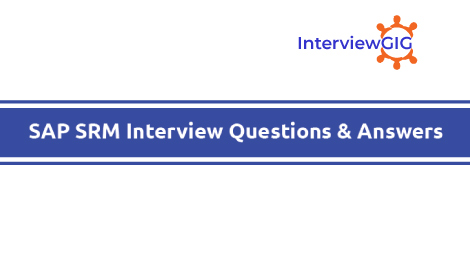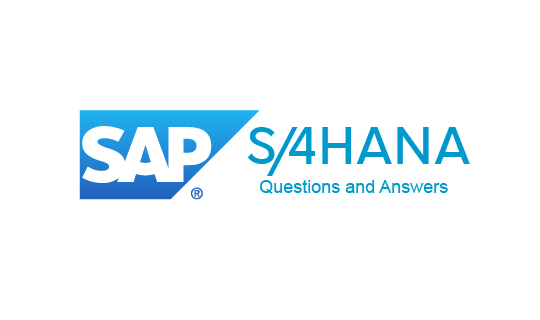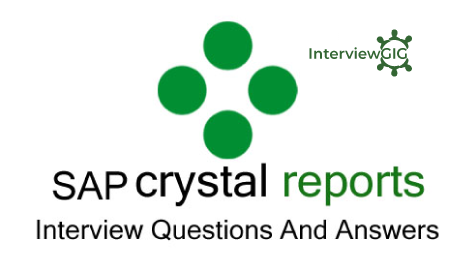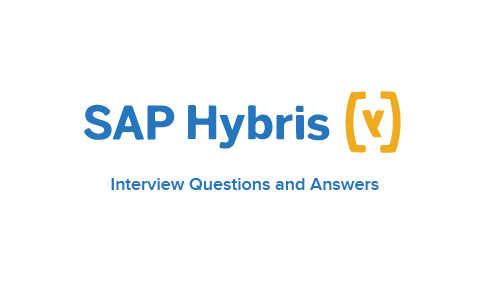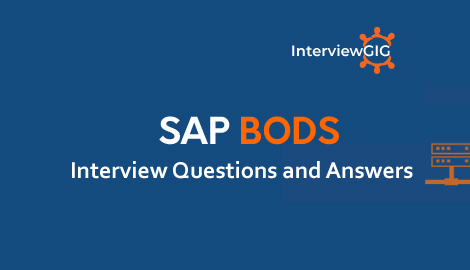What do you know about SAP FICO?
SAP FICO stands for Financial Accounting and controlling. It is one of the important tools which is useful in preparing the statements about the finance related to an organization or company or a business. SAP FICO consists of two modules, SAP Finance (FI) and SAP Controlling (CO), each of which is used for specific financial processes.
In addition to this, FICO can also be considered for the purpose of accounting, tax computations, preparing the inventory sheets, financial data storage. The users need not to worry about the security of the data and in addition to this, it simply makes sure of managing and utilizing the data in a reliable manner. SAP FICO prevents data lost and also does the verification and reporting of data
What are the important Sub modules of SAP FI?
The important sub-modules of SAP financial accounting are
- General Ledger -FI-GL
- Accounts Receivable -FI-AR
- Accounts Payable -FI-AP
- Asset Accounting -FI-AA
- Back Accounting -FI-BA
- Travel Management-FI-TV
- Funds Management (FI-FM)
- Special Purpose Ledger (FI-SL)
What are the other modules to which FI is integrated?
The other modules to which FI is integrated are
- Sales and Distribution (SD)
- Material Management (MM)
- Human Resource (HR)
- Production Planning (PP)
- Payroll
- Controlling of financial transaction and other ERP modules
Can you explain SAP CO?
SAP controlling module provides supporting information to management for effective planning, reporting and monitors the business operations of organization. With the help of information that provided by SAP CO module, that organization can make effective management decision making process.
What are the important Sub modules of SAP CO?
- Cost Center Accounting (CO-CCA)
- Cost Element Accounting (CO-CEA)
- Profitability Analysis (CO-PA)
- Product Costing (CO-PC)
- Profit Center Accounting (CO-PCA)
- Internal Orders (CO-IO)
- Activity–Based Costing (CO-ABC)
What are the organizational elements in SAP-FI?
The organizational elements in SAP FI are:
- Company Code: It is an independent organizational unit which is registered under companies act 1956. Under company code you can generate individual financial statements like profit & loss account and balance sheets.
- Business Area: Business area in SAP is an organizational unit within accounting that can be classified as geographical wise or product wise as per the requirements of an organization
- Chart of Account: COA is defined at the client level. After creating, it has to be assigned to a company code. To have a better control in SAP, general ledger Accounts are grouped under a chart of account. This will help to develop different financial statements for legal reporting.
- Functional Area: s an organizational unit that sorts operating expenses incurred based on the activities. For example, Production, Administration, sales, research & development, etc.
What is Post Key?
Posting Key is a 2-digit numeric key. To control the entry of document line items in a FI Transaction. Posting key determines
- Account Types (A, D, K, M, S)
- Types of posting. Debit or Credit
- Field status of transaction
What is the company code in SAP?
Under company code you can generate individual financial statements like profit & loss account and balance sheets.
What are the TCodes used to create, edit, assign COA in SAP?
Here are transaction codes used to create, edit, assign COA in SAP;
OB13: To edit or define or create COA list
OB62: Assign company code to A COA
OBD4: Define Account Group
OB53: Define retained earning account
What are the different Types of COA in SAP FICO?
Operating COA: Operating COA for an organization contains all the General ledgers that it uses in a day to day posting.
Country Specific COA: General Ledger accounts in country specific charts of accounts are created to fulfill legal requirements of a particular country.
Group COA: General Ledger accounts created under a group chart of accounts are used by the entire corporate group
How many Chart of Accounts can company code have?
You can have one Chart of Account for one company code which is assigned.
For a Company Code how many currencies can be configured?
There are three currencies that can be configured for a Company code, one is a local currency and two are the parallel currencies.
Please review our previous updates on
SAP FICO Interview Questions and Answers for Experienced Candidates.
Tell me something about account group?
The account group is a summary of accounts based on criteria that effects how master records are created.
The account group determines:
The number interval from which the account number is selected when a G/L account is created.
The screen layout for creating G/L accounts in the company code-specific area
OBD4 – Define Screen layout per account group (G/L Accounts)
What are the options in SAP for Fiscal years?
Fiscal year in SAP is the way financial data is stored in the system. In SAP, you have 12 periods and four special periods.
These periods are stored in fiscal year variant that is:
- Calendar Year: From Jan-Dec, April-March
- Year dependent fiscal year
- In Indian -12 posting periods (April – March) with 4 Special Periods – V3
- In US -12 posting periods (Jan – Dec) with 4 Special periods – K4
- Some other companies follow posting periods from July – June or October to September with 4 Special periods.
What is a year shift in SAP calendar?
SAP system does not know what is broken fiscal year. It is used for non-calendar year fiscal year variants.
Here, +1 is fiscal year is later than the Calendar year
-1 is Fiscal year is before the calendar year.
What is year dependent fiscal year variant?
In a year dependent fiscal year variant, the number of days in a month is not as per the calendar month. For example, in year 2019, month January end on 29th, month Feb ends on 26th etc.
What is Shortened Fiscal Year?
If the number of periods in a fiscal year is less than number of periods in the calendar year then it is called a shortened fiscal year. It is used in situations when a fiscal year should be shorter than 12 months.
What is field status?
Field status group is a group configured in FSV -Field Status Variant to maintain field status for G/L (General Ledger) accounts. It controls which field should suppress, display, optional and required.
What is Fiscal Year Variant?
It is a variant that controls parameters for a financial year, such as managing financial accounting year and posting period variants to open and close posting periods.
Define field status group?
Field status groups control the fields which come up when the user does the transactions. In FIGL (Financial General Ledger) master, the field status group is stored.
What is posting period variants?
In fiscal year posting period is a period for which the transactions figures are updated. The posting period variants in SAP is accountable to control which accounting period is open for posting and ensures that the closed periods remain balanced.
Read : Check ALL SAP Modules Interview Questions and Answers
What are the applications of SAP FICO?
The SAP FI modules real time functionality allows the financial manager to take better decision making and strategic planning for the organization. SAP FICO has many real-time applications. Handling financial tasks vital to the company, Asset and cost accounting, Consolidation, Real estate etc.
What is a WIP?
WIP stands for Work in Progress. WIP inventory forms a part of the working capital or current assets of a firm appearing in their balance sheet.
How input and output taxes are taken care in SAP?
For each country tax procedure is defined, and tax codes are defined within this. There is a flexibility to either expense out the Tax amounts or capitalize the same to stocks.
What are validations and substitutions in SAP?
A validation rule is basically a check on a certain field’s data. When a user is entering a transaction and enters data in that certain field which violates the validation rule, a error message appears for the user and generally will not allow the transaction to continue.
The substitution rule also checks a certain field’s data (that you design in configuration). If the field’s data matches what has been configured in the substitution rule, the data will be removed. Then specific other data will be substituted into that field. Substitutions can also be set up at the header, line item, or complete document level, and if a certain set of user-defined criteria are met, then a new value is put into a specific field.
What are the application areas that use validation and substitutions?
- FI- Financial accounting
- CO-Cost accounting
- AM-Asset accounting
- GL-Special purpose ledger
- CS-Consolidation
- PS-Project system
- RE-Real estate
- PC-Profit center accounting
What is the default exchange rate type which is picked up for all SAP transactions?
For all SAP transaction, the default exchange rate is M (Average Rate).
What are the methods by which vendor invoice payments can be made?
- Manual payment without the use of any output medium like cheques etc.
- Automatic payments like DME (Data Medium Exchange), cheques, Wire transfer.
Can you explain Financial Statement Version in SAP?
FSV stand for Financial Statement Version. It is a reporting tool. It can be used to extract final accounts from SAP like Profit and Loss Account and Balance Sheet. The multiple FSV’s can be used for generating the output of various external agencies like Banks and other statutory authorities.
Explain How taxes are taken care of in the SAP FICO?
One of the major issues is Tax Slabs are not similar in all the countries. Also, there are additional taxes applicable there. SAP FICO has tax procedure already defined in it for various nations and the users are free to get the information regarding the same.
The Tax amounts can be sent to stocks by default or the users are free to make challenges in them as per their need and convince. Thus, taxes are not an issue with the SAP FICO.
What is GGB0?
GGB0 is the transaction code to Create and Maintain Validations. Some other t-codes and components which helps and supports us in GGB0 Validations are:
GS01: to Create Set.
SET: Set is like a Range. We can also use particular value.
OB28: It is used for validation of Accounting Document to Activate and deactivate GGB0 Validations.
What are the problems when business area is configured?
The problem faced when a business area is configured, is splitting of account balance which is more pertinent in the case of tax accounts.
What is Good Received/ Invoice Received clearing account?
Good Received/ Invoice Received is an interim account Postings are made to the goods receipt/invoice receipt (GR/IR) clearing account or to GR/IR accounts whenever goods are delivered and invoice receipts are captured with a material reference. Postings relating to the same purchase order and purchase order item are updated but not cleared automatically.
Explain Where can you use the internal order?
To track the cost, internal orders are used; they are proposed to be incurred over on a short-term basis.
Is it possible to calculate depreciation to the day?
Yes, it is possible to calculate depreciation, to do that you have to switch on the indicator Dep. to the day in the depreciation key configuration.
Explain asset classes?
The asset class is the main class to classify assets. Every asset must be assigned to only one asset class. Example of asset class is Furniture & Fixtures, Plant & Machinery, and Computers etc. The asset class also contains G1 account, when any asset is procured, G1 account is debited. Whenever you create and asset master, it becomes mandatory to mention the assets class for which you are creating the required assets.
So, whenever any asset transaction occurs, the G1 account attached to the asset class is automatically picked up and the entry is passed. You can also specify the default values for calculating the depreciation values and other master data in each asset class.
What is Capital Work in Process in SAP?
Capital Work in Progress is an account which contains all the expenses incurred for the generation of an asset before the balance sheet
What is Asset Account?
An asset account is a general ledger (G/L) account used to sort and store the debit and credit amounts from a company’s transactions involving the company’s resources. The balances in the asset accounts will be summarized and reported on the company’s balance sheet.
What are the customizing prerequisites for document clearing?
The customizing prerequisite for document clearing is to check the items cleared and un cleared, and this is done by open item management. Open item management manages your outstanding account, i.e. account payable and account receivable. For instance, an invoice item that has not yet been paid is recorded as open account until it is paid.
What are the main components of Chart of Accounts?
The main components of Chart of Accounts are:
- Chart of account key
- Name
- Maintain Language
- The G/L account number
- Controlling Integration
- Consolidation-Group chart of accounts
- Block indicator
What is General Ledger Account?
A general ledger account is an account or record used to sort, store and summarize a company’s transactions. or the central task of G/L accounting is to provide a comprehensive picture of external accounting and accounts. Recording all business transactions (primary postings as well as settlements from internal accounting) in a software system that is fully integrated with all the other operational areas of a company ensures that the accounting data is always complete and accurate. (SAP -Portal)
What is credit control area in SAP?
Credit control area in SAP is an entity that controls and manages credit control policy in an organization. It maintains credit information of every customer in a company and checks a credit limits for customers. Transaction code: OB54
How can you create Credit Control Area in SAP?
Using Transaction code: OB45
IMG Path: Enterprise Structure -> Definition -> Financial Accounting -> Define Credit Control Area
Table: T014
SPRO > enterprise structure > maintain structure > definition > financial accounting > maintain credit control area and then enter the following description
Cred.contr. area: Enter a four digits key that defines as credit control are key in SAP.
Currency: Enter the credit control are currency key
Credit limit : Enter the maximum credit limit amount allowed for customers.
Update: choose credit update for open order/ delivery, billing documents
FY Variant: Enter the fiscal year (FY) variant key
Risk category: The Risk category level
All co.codes :
What is Profit Center?
The profit center view shows the various internal areas of responsibilities. Objects such as cost centers, materials, etc. It can be used for profit center analysis. Profit center can be used to determine the revenues, costs, and profitability for specific areas of responsibility.
What is Document type in SAP?
the document type is a key that is used to classify accounting documents and distinguish between business transactions to be posted. the document type is entered in the document header and applies to the whole documents.
The purpose of Document type in SAP is
- Define Number range for documents
- Controlling the posting to account types e.g. Assets, Vendor, Customer, Normal GL account
- It is used for the reversal of entries
What is APP in SAP FICO?
APP stands for ‘Automatic Payment Program’; it is a tool provided by SAP to companies to pay its vendors and customers. APP tools help to avoid any mistakes taken place in posting manually. Also, when number of employees is more in the company, payment through APP becomes more feasible.
What is Invoice Verification? How are tolerances for invoice verification defined?
Invoice Verification is a process which confirms in SAP that an invoice has been received by the Department. Tolerance determines whether the payable places matching or tax hold on the invoice. The following are the instances of tolerance can be defined for Logistic Invoice Verification.
- Small differences
- Moving average price variances
- Quantity variances
- Price variances
Is business area at company code level?
No. Business area is at client level which means other company codes can also be posted to the same business area.
What are parallel and local currency in SAP?
Each company code can have two additional currencies, in addition to the company code, currency entered to the company code data. The currency entered in the company code creation is called local currency or the local currency is the currency of the company code which represents the legal entity in a ‘standard’ SAP configuration.
This currency is used to comply with local tax reporting requirements as well as representing the functional currency as seen in FAS 52 or IAS 21 and the other two additional currencies are called parallel currencies. Parallel Currencies can be used in foreign business transactions. In order to do international transaction, parallel currency can be used. The two parallel currencies would be group and hard currency.
What is the main use of SAP FICO?
We use SAP FICO modules within a company to manage financial tasks within an international framework of languages and currencies.
SAP FI is used for Fixed Assets, tax accounting, General Ledger,Accrual,Cash Journal,and other finicial tasks.
SAP CO (Controlling) used for Cost Sheet, Buying orders, Stock, Cost assignment etc.
